If you’re a fan of the rebooted Battlestar Galactica series, you will remember what made it possible for the Galactica to escape the Cylon attack which destroyed the rest of the fleet: The Galactica was oddly analog – oddly because it was after all, a spaceship and one capable of faster-than-light speed as well.
But it’s a TV show – and the premise/plot line is that while the evil Cylons were able to use a computer virus to disable the more modern ships in the fleet, they couldn’t hack Galactica, which still had hard-line phones, even – and thus the ship was able to “jump” out of their reach to live and fight another day.
This, obviously, is a perk of not being “connected.”
And, injected.
My buddy Tim – who is a great mechanic, runs his own shop – mocks me relentlessly over my preference for carburetors. He points out how set-and-forget fuel injection is; that it self-adjusts for altitude and fuel quality/octane (not unimportant given the ethanol-soused “gas” that’s almost unavoidable unless you’re lucky enough to live within the orbit of a place where real gas s still sold) and that you never have to set a choke or deal with floats and accelerator pumps; that an injected engine starts quicker and warms up faster and almost never bogs or stumbles or stalls.
I won’ argue any of the above – because it would be idiotic to do so. Because Tim’s right about all of that.
Aber – as some of us sometimes say (those of us hiding from justice in the Argentine jungle) there is a defense to be made of the carburetor. It is the Battlestar Galactica defense.
When FI works, it works perfectly. The car starts, off you go – no warm-up wait; no off-idle stumble. No re-jetting to accommodate the ethanol or the altitude. Fewer moving parts, much less to adjust and maintain.
But when FI stops working, you are in the position of the other battlestars – the ones that didn’t get away from the attacking Cyclons. You are a sitting duck, stuck by the side of the road.
Waiting for a guy like Tim to show up with his truck. To tow your no-longer-operational battlestar back to his shop for repairs which you can’t do by the side of the road. Because – for the most part – EFI is not amenable to by-the-side-of-the-road service. It either works or it does not. And when not . . .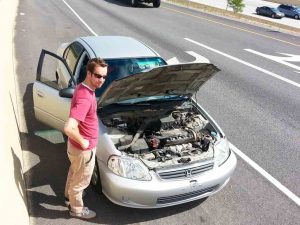
Cue the Cylons.
Carbs, on the other hand, have the virtue of being very agreeable to by-the-side-of-the-road fixing. They also rarely stop working outright. It’s usually something that’s out of adjustment – or something that got dirty or clogged, which can be dealt with by cleaning using a can of aerosol carburetor cleaner, easy-peasy and cheap, too).
Or it’s the fuel pump – which, being mechanical as opposed to the EFI system’s electrical pump – is also usually mounted on the engine, where it’s by-the-side-of-the-road accessible, as opposed to the EFI system’s in-the-tank (and forget by-the-road-accessible) pump.
The EFI fuel pump generally lasts a long time. But when it croaks, it usually does so without warning (it either works or it does not work; no in-between state – so no advance warning that a problem is coming your way) and because it’s in the tank, it’s generally necessary to drop the tank to change out the pump. This is generally not cheap – and neither is the pump itself, vs. the mechanical fuel pump, which generally costs about $40, depending on the car.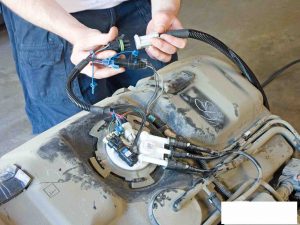
Also, you can rebuild a carburetor. You throw away bad fuel injectors and related electronic peripherals. Replace them with new parts.
A carb is immortal. If the metal hasn’t been warped by an inept geek with a strong arm and a weak brain, the soft parts – the gaskets and rubber parts – can all be replaced and once that is done, the carb is restored to as-new condition. This can be be done over and over.
Over a span of decades.
My ’75 Kawasaki and my ’76 Trans-Am both have the carbs they came with more than 40 years ago. They have been rebuilt a couple of times during that span of time, but the point is, they are still working today the same as they were more than 40 years ago – and they probably will be working just the same 40 years from now.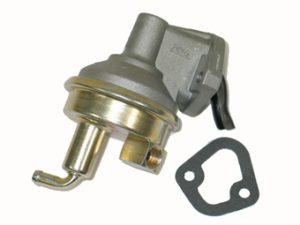
They are also immune to electrical glitches, software corruption, hackers and EMPs. They are purely mechanical devices, which can’t be fucked with remotely. They are under your control exclusively.
No “Cylons” to sweat!
Besides which, they just sound – and smell – better. The engine inhales atmosphere and fuel mixed by the vacuum vortex; hear the hiss of the abyss. That baleful bellow when the carb’s secondaries open up. And the scent of raw gas.
Inefficiency has its virtues, however un-PC.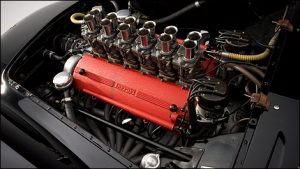
EFI is like flat white ceiling paint. It’s all the same. The formerly unique sounds and scents which used to separate one car from another car, performance cars especially, have been sacrificed to the gods of homogeneity. The air may be cleaner and our cars may not stall out on us, but today’s injected cars have less character.
I’m with Adama. Not being plugged in can be a very good thing.
. . .
Got a question about cars – or anything else? Click on the “ask Eric” link and send ’em in!
If you like what you’ve found here, please consider supporting EPautos.
We depend on you to keep the wheels turning!
Our donate button is here.
If you prefer not to use PayPal, our mailing address is:
EPautos
721 Hummingbird Lane SE
Copper Hill, VA 24079
PS: EPautos magnets are free to those who send in $20 or more. My latest eBook is also available for your favorite price – free! Click here. If you find it useful, consider contributing a couple of bucks! 


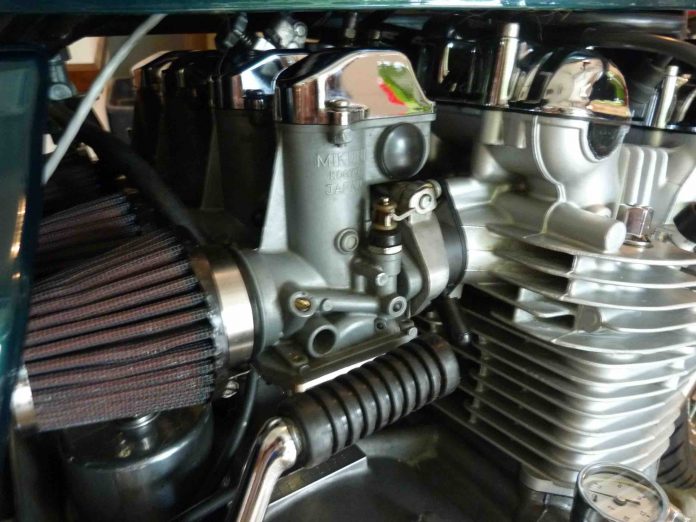









This article I feel like was written after something I would say to my friends begging me to go with the Holley EFI system. What did I do went with a Double Pumper! I Love Old School and like you said you can fix it!
I am not a big fan of fiction books despite having written one, but this book here is called “Ghost Fleet”
read.barnesandnoble.com/book/ghost-fleet-a-novel-of-the-next-world-war/title-page#1 Is a novelization of that same concept only Earth where the Chinese are able disable the US’s latest trillion dollar toys and the US has to dust off the mothball fleet to fight a war.
You know that you are in hell when you live in a police state and those who criticize tyranny get banned and everyone else who mentions the police state supports it.
https://raddle.me/f/News/new
The reboot BSG the advantage was not being networked.
Most carburetor equipped engines that are still around were built with or were converted to electronic ignition. From the early 80s some carbs got electronic controls. EFI also has little in the way of failures. Outside of adjusting carbs I haven’t had more or less problems and care with either. Fuel pumps, rusted parts, rubber lines, fuel filters, and carb rebuilds being the leaders.
Beware of the cheap (HEI) 4 pin modules (esp. Wells brand) sold at the parts stores. Not had good luck with those. Some bad right out of the box, others act funny once they get some heat in them (missfires over 4k rpm and such)
Just had to replace the dizzy on our ’01 Savanna 3500 at 250k miles due to the teeth on the distrubtor gear being nearly worn away. S.O.B. had around 3/8″ of slack when wiggling the rotor.
Another issue I see is engines have been getting electro-mechanical parts INSIDE the engines now. No way this bodes well long term.
Who’s going to replace a e-lifter, or e-phaser for say $5K on a 10 year old engine. And will these parts even be avail. in 10-15 years?
I sell some e-parts in my business and they change designs fast, and as soon as a part goes out of production, they become very expensive and sometimes impossible to get, rendering the major component useless.
All this for a few mpg. The costs are a wash at best. But I know the regs are for limiting competition, not raising mpg.
there was a BG episode where a young officer wanted to hook all the ships computers together “to be able to be more effective against the next Cylon attack”. Adama said no but the kid did it anyway and they almost lost the fleet when the Cylons hacked into one and therefor all.
I use that reference in my small business. Every computer guy and company wants to hook everything together to be “more effective”. I won’t allow it, within reason. All our people have their own ‘island’ of information for their own job, so we can only lose that much if stolen or compromised. Yes it’s more work, but I think worth it.
Eric, I asked not long ago about your opinion on some of the new bikes. Your answer was great. It turns out I’m not as solvent as I thought I’d be anyway, so I set to wrenching on my old bike. Adjusting cables, replacing brake pads, bleeding lines, all new fluids, plugs, filters, and reworking the carb (yep: an ’03 but still very analogue). Man, am I happy I kept that bike and got my fingernails dirty and knuckles scraped! Did the work right outside in front of my apartment and it’s running like a new bike! I’d almost forgotten how good it feels to make a machine run right! And I’m pretty sure I can outrun the cylons now…
Still hunting for the distributor so I can clean the points, though 😉
Oh, yeah. Nothing was more fun than opening a Rochester quad and having a spring or ball go rolling across the bench onto the floor. Or trying to line up all those dangling thingies as you tried to get the top back on the base with all of them in the right places.
That even beats out watching two heavy flows of gasoline out the vent pipes on dual Stromberg 97s going right down the manifold, past the valve stems and directly into the pan. I still can’t understand how the floats on two carbs, less than 6 months out of the box, both stuck open at the same time. But it did clean the engine for the rebuild. Six months after I built it in the first place.
I still think SUs are about as clever as they get with the vacuum piston controlling flow through the main jet. But I used to drive from the east around Lancaster to Toledo on the Pennsylvania and Ohio Turnpikes, in the wee hours, at a steady (illegal) speed. The Triumph (and my 18 year-old bladder) would make that 700 mile trip (to Flint) with one pit stop. Gulf, I believe, was dying its fuel purple at the time. The pistons got stuck at the point of the turnpike speed with a neat ring of purple dye and the Triumph barely ran for the hop from Toledo to Flint at stop and go, non-turnpike speeds. I never had the problem again by avoiding that brand of fuel when making the trip.
But I give bonus points to the Italians. I really loved Webers. You could buy that little factory kit of jets and installation tools and keep it in the glove box. You could swap out jets without removing anything but the air cleaner. There is merit in a mindset where you can change mixtures as easily as you can change governments. And vice versa. Our government is more like the Rochesters. (Too) durable and impossible to rebuild.
Hi Arylioa!
Once you master the Qjet, you can tear it down and put it back together almost without looking at it – and in 15 minutes or less. The problem – the reason for the “rep” – is that many people tore one down without having understood it, how it works and got frustrated and broke something or misadjusted it and then blamed the carb for their lack of skill/understanding.
What I like about carbs is that they are physical things. Mechanical parts; you can visually see/feel the moving the parts and verify the operation. Electronic stuff is kind of like religion – you take it on faith and it’s all invisible!
IMHO a (pre-electronic) Qjet is the best carb there is for a daily driver, but it’s also the easiest to screw up (most complex). Better than a throttle body injection any day of the week.
Tuning EFI isn’t that bad either, there’s a bit of a learning curve but nothing overwhelming. I wouldn’t say it’s cost effective to switch from a carb to EFI but if it’s factory installed don’t be afraid to learn how to tune it. No reason to ‘take it on faith’, just need the knowledge (and software) to make it do what you want.
Learning EFI is easier than trying to dial in a Qjet being used on an application it wasn’t intended for.
http://nastyz28.com/threads/lars-qjet-papers.183265/
eric, that GM Holley was an off-breed but better carb than the regular Holley. But you know how rumors go as to such things so the first time I kitted it, I found I would have to do it myself.
Once I’d found the right kit is was a pain but went back together just like it was new. The best I ever had it adjusted to almost no adjustment when back on the car was after taking some orange barrel acid and doing the rebuild on the kitchen table(good old Chromecraft)while my 5 other roomies watched. Normally the stereo would have been blaring but Sunday morning nobody bothered since they were watching something they’d never seen before. After getting the idle right, I backed into the street, did a couple burnouts and then nailed it up to 100 or so on a 30 mph street and came back to the house. Everyone outside noticed it wasn’t using too much fuel and impressed by the “tuned” sound. Then it was off to listen to The Who and call the fairer sex(can’t say that anymore although it doesn’t make sense). The Duntov Dance was exciting to almost everyone back then. They don’t make em like Zora anymore. His motto was probably something along the lines of ‘Just get out of the way and I’ll make that sumbitch scream’.
Right on the money, as usual. My dad was the king of old, used cars. I mean, cars that were old even when I was a kid. They were cheaply maintained (or not–we blew up our family 327 Chevy when everyone forgot to keep the engine oiled up–what economists would call the problem of the commons) and contrary to some here didn’t require constant fiddling. In fact, I only recall doing routine points and condenser tune-ups on any of those cars and my own, and I’m a seriously inept handyman. I wonder about those who talk about the bad old days of old cars needing work all the time, because that was certainly not so with the fleet of semi-junkers we had.
When my ’85 Dodge B250 van’s fuel pump went bad, replacement was a snap. It was right up front on the side of the engine, cheap and easy to get to. It also lasted around 200,000 miles. I later bought a barn-find EFI ’89 Dodge van (also a B250) with a bad pump, which entailed dropping the 30+ gallon tank and screwing around with what looked like a miniature R2D2 robot I had to wire and drop into it. What a royal pain. When trying to track down an ignition problem I had to order through the mail a certain capacity resistor and wire it into a certain configuration the factory manual called for–a tool for such apparently never being created. Another royal pain.
Thus I’m utterly unsympathetic to those who claim unreliability and endless tinkering in pre-computer cars. As Elmer Keith said, “Hell, I was there.” That’s not the way it was.
Morning, Ross!
I agree with all of that. My ’76 Kawasaki is as reliable as any new bike; arguably more so – because if anything does go awry, I can probably deal with it myself, right there by the side of the road. A new EFI/computer-controlled bike? Not so much!
My bike rarely needs anything from me other than fluid/filter changes. Once set, the carbs are good to go for a long time. Keeping them from being gunked up by ethanol is the main issue.
With regard to cars – same thing. My ’76 Trans Am is as easy starting and driving as a modern car; arguably more so – because it’s simpler. The one thing which made it feel old was its original non-overdrive transmission. I replaced that with an overdrive transmission – and the car now drives very much like any modern car, but without all the crap and hassle!
I’ve had a bunch of Qjets and never did a thing to any of them, except I bought a pickup with a Holley and after a few days of THAT, bought a junkyard Qjet and paid a neighbor to rebuild and install it. Probably could have just bolted in on and ran with it as is.
Only thing I see better about TBI is that you don’t have to wait ten minutes for the engine to warn up even in the summertime, and the throttle response on a hill with a load is marginally better. I suppose they run a lot cleaner as well. But one of the few times I’ve actually ever been stranded was when the module in the distributor suddenly quit going down the highway – just like turning off the key. Should spend another $75 and throw a spare in the glovebox I guess.
My R8 V10 needs two replacement shocks(hydro-magnetic?) in the rear and one of two replacement fuel pumps. This is around 6K! I’m appalled at this but thus is newer tech. Ces’t La Vie. Sigh.
Hi Craig,
Oy!
Then again, the Ohlins forks I want soooo badly for my ZRZ1200 are $2,000!
Life may be all fun and games now in the USA, but as offshoring increases, illegal immigration rises, hard-working Americans die off or dropout due to higher taxes and more regulations, the national debt climbs, there is more terrorism as the result of illegal American wars, the police become more brutal enforcing draconian decrees, the US Ponzi economy and stock markets collapse, cash is banned, Americans are implanted with microchips, and real crises and false flags are used to force Americans to go to the gulags and finally to the gas chambers and ovens, will Americans wish that they had spoken out earlier against the dangers of wars, debt, and tyranny?
https://redguardsaustin.com/t/whatever/new/
Hi Free Speech,
Unfortunately, they probably will not, for a number of reasons. Ennui, not knowing what to do – and not able to do it. What can I do? I try to get people at least thinking/talking via my writing and speaking. But does it accomplish anything? I don’t know. It may help the few – the remnant – who still believe in live-and-let-live by giving them the comfort of knowing they are not alone, that there are others like them out there. But does it lead to a meaningful improvement in the situation?
It seems we are doomed to repeat the cycle, over and over.
Liberty is anomalous because most people fear it or despise it. They want “security” – and they like ordering other people around.
Until that changes, nothing else will.
Complain all you want. Nothing ever changes anyway.
Free, there’s a good article in LRC today by Joseph Mercola about depression being up 33% overall. With psych drugs, a failing economy, no jobs(bulllshit on recent govt. numbers) and so many people living below the poverty line along with a poisoned food supply and as well as fake food things look bad for people in the US.
https://lewrockwell.us7.list-manage.com/track/click?u=6ad24f4cd1574f1f7b8a0a03a&id=9a2d82a297&e=62e95e6f13
Well, that’s depressing!
Its a double edged sword. Cars today are generally very reliable though. I don’t have to pull over to the side of the road to adjust anything, or worry about altitude causing the carb to dump to much or not enough o2 into the fuel mixture. So yeah, its a double edged sword.
A carb with manual choke will start more reliably in really cold weather. EFI seems to just lose its way around -20, unless you have a block heater plugged in. I’ve started old trucks at -40 with no heat. But of course you have to let them warm up quite a while before moving.
And points and condenser will gradually degrade rather than failing suddenly, plus you can usually tweak them enough to get home (or at least to town) or just carry a spare set and throw them in on the side of the road.
It’s a trade off: drive almost forever without maintenance and then be suddenly stranded, or keep tweaking and always get home.
Yea, but that Cylon chick was HOT.
A well designed, well built fuel injection system should do just fine. My work truck, a 2011 F-150, just turned over 265,000 miles. The only fuel problem it has had is the spring on the cap-free filler flap is getting tired. In fact there’s been remarkably little go wrong with this vehicle. A few coolant and oil hose leaks, that’s it. Oh, it’s mostly highway driving and I don’t tow anything, but I don’t baby it either. And that’s even with the gimped up transmission reprograming the company did to it a few years ago (got a .1 MPG increase out of it -someone did the math on the fleet average on that one).
Sorry for sh**ing on your point, but a well-built FI system is so much more reliable and no intervention required for hundreds of thousands of miles doesn’t sound like such a bad deal to me. Yes there are exceptions like my boss’ old Harley, which they conveniently stopped producing spares for just before his failed, but that’s more a HD thing, not an FI thing.
Even hotter… a bank of carbs on a Ferrari V12:
http://www.auto123.com/ArtImages/105022/1957-ferrari-testa-rossa-i02.jpg
I am weird, I realize.
Same in re aircraft. Gibs me a Constellation – or better yet, a 707 – over anything with an “efficient” high-bypass turbofan.
Blechh!
I’m of a mixed mind when it come to aircraft. On the one hand I’m debating getting a sport pilot license. My desire is to fly extremely basic equipment, minimal instruments and VFR rules only. But then I watch a cockpit video from a Gulfstream or similar business jet and think, well, it would only be a few thousand dollars more for IFR training…
Listen to this…Jesus! I wish my house sat right next to the got-damned airstrip!
https://www.youtube.com/watch?v=EI3owgIj6zs
When I lived in Aspen I was literally across the street from KASE. Talk about a plane spotters’ dream locale. Someone had the good sense to put a park bench up on a grass knoll so you could watch all the little jets come in. And boy did they come in. On Christmas week it was like Denver International except with a lot of radio chatter and all different aircraft, far more interesting than the Southwest and Jet Blue 737s that dominate big airports these days. And the Costco over in Gypsum is under the approach for KEGE. You’ll get a real closeup look at the landing gear just by looking up.
So yea, I totally get it. An unfortunate side effect of competition and efficiency is to drive out the interesting and unique, since unique doesn’t seem to scale. And fiddly adjustments just mean expensive. Nostalgia is a nice emotion, but it’s also important to remember the bad old days too.
Eric: No need to live near airport – bring the “airport” to you.
See John Travolta:
https://www.youtube.com/watch?v=x-z3GN4Fbog
Hi Liberty,
This – the Travolta thing – makes me almost wish I’d become an actor! Incidentally, whatever his flaws, Travolta can’t be an idiot. No one who earns a multi-engine/IFR rating and can pilot a heavy jet is an idiot, ipso facto.
I recall when the actor who played Worf bought an F 86 which used to be plentiful and relatively cheap. Probably they cost more to make reliable than the initial price.
Eric,
I particularly enjoy the sound of 4 dual row Pratt & Whitney radials on a B24 or a Rolls Royce Merlin in a Mustang. The Collings Foundation was here in my neck of the woods last week on their yearly US tour. They sell rides in a B24, B17, B25 or a P51 Mustang. The flight path goes right over my shop, I’d say about 300 feet altitude, so yeah, I got to hear that all week, totally awesome! I took my Dad with me about 10 years ago on the B24. Everyone, if you ever get the chance to go fly on one of these planes, do it, you won’t regret it.
Now if want you to experience the ultimate piston powered aircraft experience, go to the Reno Air Races, 500 mph, 100 feet off the deck, and the insane sound of a 3500 rpm Merlin!
Hi RK,
No disagreement with you at all on the function… points conceded and amen’d!
But I am a flaky artist… things that look pretty and have that certain something just appeal to me on an emotional level. I think this is why the car culture is dying, incidentally. Cars have become anodyne, appliances. They work great, but they’re pretty much all the same.
This is the interesting thing about you, considering you grew up in the malaise era, yet you still love the horrible gimped up cars of that time.
I could see a young hipster millennial looking back at the 1970s with rose-colored glasses, but I actually lived though that era. I can clearly see my dad cursing when the damn thing wouldn’t start on Sunday morning -because we had to get to church, more so after dad taught us some new words. I remember watching as he changed out the points on the distributor and set up the timing with the strobe light. And I remember him futzing around with the carb, cleaning out the carb, worrying about the carb freezing, and my uncle’s Suburban dying at the bottom of the hill because of a pinhole in the float that let it fill with gasoline, then the extended debate as to if it would be safe to solder it back together or would it explode? Even years later when those Novas and Chevelles were leaking oil all over the high school parking lot, it seemed a lot more time was spent screwing around with the cars than actually driving them.
it’s one thing to tune up a carb on the weekend trailer queen, another thing entirely when you have to get to work on time.
Hi RK,
Yeah, but think of the bonding… and the learning! We were in touch with cars back then because we had to be. Today, they are got-damned refrigerators, with all the function and none of the charm….
Gibs me something interesting, every time…
Like the time the sintered bronze fuel filter stopped up with sugar even after I had removed and cleaned the tank….should have removed the filter and drained the line right them. I engineered a hose to throw a choked down fuel flow to the carb and made it to a parts store before it caught fire…..again. Try that on a new motorized computer when the only thing working right is the wifi hotspot and GPS.
I think the biggest problem with the last carburetors is that they didn’t work well with all of the vacuum operated pollution controls. Prior to that period, carburetors worked fine and almost never completely broke down; you could limp home at least. Try that today with the E.F.I. systems equipped with electric fuel pumps that I have decided I hate because I have been towed about 5 times too many, only to face $600 plus repair bills each time.
Some carburetor installations were incredibly efficient; consider the 1976 Plymouth Feather Duster and the 1976 Dodge Dart Light. Both of these cars had a 225 c.i.d. Slant Six that was equipped with a carburetor, and those equipped with the 4 speed overdrive transmission were rated at 24 m.p.g. around town and 36 m.p.g. on the highway. Does any 6 cylinder car made today meet or exceed these 1976 specifications without using a very complicated, expensive, and unreliable 10 speed automatic transmission and problematic direct fuel injection system?
Hi Dave,
Just set the accelerator pump right and no worries!
Speaking of accelerator pumps, my Malibu had a GM Holley with vacuum accelerator but an interesting mod easily done was to wire the pump linkage to the throttle so a very high compression engine would instantly open to full throttle although that particular carb had no discernible lag even on vacuum. Probably changing to a dual point distributor added a some difference in WOT also…..one of the great things points did well in changing the dwell.
Many years later I’d have an HEI unit tuned to the power curve with different weights and springs on a machine designed just for that. You could carry another set of springs and weights or two to experiment with maximizing power through the rpm band. That may be one of the things total computer management does well and even better but I still prefer the HEI.
Hi Eight!
I have an HEI in the TA; it’s a great distributor. Easy to adjust and virtually maintenance free. Never had a problem with one. I also love the Quadrajet – and consider it among if not the finest carb ever designed. Properly set up, it will give you everything meaningful EFI does – easy/quick starts, sharp response to throttle inputs without bogs or stumbles – and without the “sealed box” nature of EFI, as well as the expense. I grant that EFI gives you automatic adjustment for altitude and also fuel quality, but that has never been an issue for me. And yes, I know that carbs are “dirtier.” Well, put me in the town stocks for that. Guilty as charged!
eric, I have always used performance coils on HEI when I had one tailored for an engine. I have replaced exactly one coil and that was on an old Silverado that was stock except for intake and exhaust. A friend had the stock distributor on a 93 Silverado 350 and it went 342,000 miles before becoming sloppy enough to affect the engine in a negative way. New distributor and new wires and plugs made that engine go over half a million miles and still healthy when he sold it. 2 transmission for that half million miles and the first spent a lot of time pulling a horse trailer.
repost, right place
Beware of the cheap (HEI) 4 pin modules (esp. Wells brand) sold at the parts stores. Not had good luck with those. Some bad right out of the box, others act funny once they get some heat in them (missfires over 4k rpm and such)
Just had to replace the dizzy on our ’01 Savanna 3500 at 250k miles due to the teeth on the distrubtor gear being nearly worn away. S.O.B. had around 3/8″ of slack when wiggling the rotor.